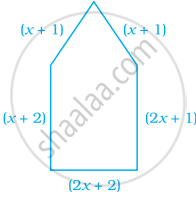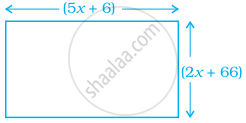Topics
Rational Numbers
- Rational Numbers
- Closure Property of Rational Numbers
- Commutative Property of Rational Numbers
- Associative Property of Rational Numbers
- Distributive Property of Multiplication Over Addition for Rational Numbers
- Identity of Addition and Multiplication of Rational Numbers
- Negative Or Additive Inverse of Rational Numbers
- Concept of Reciprocal or Multiplicative Inverse
- Rational Numbers on a Number Line
- Rational Numbers Between Two Rational Numbers
Linear Equations in One Variable
- Variable of Equation
- Concept of Equation
- Expressions with Variables
- Balancing an Equation
- The Solution of an Equation
- Linear Equation in One Variable
- Solving Equations Which Have Linear Expressions on One Side and Numbers on the Other Side
- Some Applications Solving Equations Which Have Linear Expressions on One Side and Numbers on the Other Side
- Solving Equations Having the Variable on Both Sides
- Some More Applications on the Basis of Solving Equations Having the Variable on Both Sides
- Reducing Equations to Simpler Form
- Equations Reducible to the Linear Form
Understanding Quadrilaterals
- Concept of Curves
- Different Types of Curves - Closed Curve, Open Curve, Simple Curve.
- Concept of Polygons
- Classification of Polygons
- Properties of a Quadrilateral
- Interior Angles of a Polygon
- Exterior Angles of a Polygon and Its Property
- Concept of Quadrilaterals
- Properties of Trapezium
- Properties of Kite
- Properties of a Parallelogram
- Properties of Rhombus
- Property: The Opposite Sides of a Parallelogram Are of Equal Length.
- Property: The Opposite Angles of a Parallelogram Are of Equal Measure.
- Property: The adjacent angles in a parallelogram are supplementary.
- Property: The diagonals of a parallelogram bisect each other. (at the point of their intersection)
- Property: The diagonals of a rhombus are perpendicular bisectors of one another.
- Property: The Diagonals of a Rectangle Are of Equal Length.
- Properties of Rectangle
- Properties of a Square
- Property: The diagonals of a square are perpendicular bisectors of each other.
Practical Geometry
- Introduction to Geometric Tool
- Constructing a Quadrilateral When the Lengths of Four Sides and a Diagonal Are Given
- Constructing a Quadrilateral When Two Diagonals and Three Sides Are Given
- Constructing a Quadrilateral When Two Adjacent Sides and Three Angles Are Known
- Constructing a Quadrilateral When Three Sides and Two Included Angles Are Given
- Some Special Cases
Data Handling
- Concept of Data Handling
- Interpretation of a Pictograph
- Interpretation of Bar Graphs
- Drawing a Bar Graph
- Interpretation of a Double Bar Graph
- Drawing a Double Bar Graph
- Organisation of Data
- Frequency Distribution Table
- Graphical Representation of Data as Histograms
- Concept of Pie Graph (Or a Circle-graph)
- Interpretation of Pie Diagram
- Chance and Probability - Chance
- Basic Ideas of Probability
Squares and Square Roots
- Concept of Square Number
- Properties of Square Numbers
- Some More Interesting Patterns of Square Number
- Finding the Square of a Number
- Concept of Square Roots
- Finding Square Root Through Repeated Subtraction
- Finding Square Root Through Prime Factorisation
- Finding Square Root by Division Method
- Square Root of Decimal Numbers
- Estimating Square Root
Cubes and Cube Roots
Comparing Quantities
- Concept of Ratio
- Basic Concept of Percentage
- Increase Or Decrease as Percent
- Concept of Discount
- Estimation in Percentages
- Basic Concepts of Profit and Loss
- Sales Tax, Value Added Tax, and Good and Services Tax
- Calculation of Interest
- Concept of Compound Interest
- Deducing a Formula for Compound Interest
- Rate Compounded Annually Or Half Yearly (Semi Annually)
- Applications of Compound Interest Formula
Algebraic Expressions and Identities
- Algebraic Expressions
- Terms, Factors and Coefficients of Expression
- Types of Algebraic Expressions as Monomials, Binomials, Trinomials, and Polynomials
- Like and Unlike Terms
- Addition of Algebraic Expressions
- Subtraction of Algebraic Expressions
- Multiplication of Algebraic Expressions
- Multiplying Monomial by Monomials
- Multiplying a Monomial by a Binomial
- Multiplying a Monomial by a Trinomial
- Multiplying a Binomial by a Binomial
- Multiplying a Binomial by a Trinomial
- Concept of Identity
- Expansion of (a + b)2 = a2 + 2ab + b2
- Expansion of (a - b)2 = a2 - 2ab + b2
- Expansion of (a + b)(a - b) = a2-b2
- Expansion of (x + a)(x + b)
Mensuration
Visualizing Solid Shapes
Exponents and Powers
Direct and Inverse Proportions
Factorization
- Factors and Multiples
- Factorising Algebraic Expressions
- Factorisation by Taking Out Common Factors
- Factorisation by Regrouping Terms
- Factorisation Using Identities
- Factors of the Form (x + a)(x + b)
- Dividing a Monomial by a Monomial
- Dividing a Polynomial by a Monomial
- Dividing a Polynomial by a Polynomial
- Concept of Find the Error
Introduction to Graphs
- Concept of Bar Graph
- Interpretation of Bar Graphs
- Drawing a Bar Graph
- Concept of Double Bar Graph
- Interpretation of a Double Bar Graph
- Drawing a Double Bar Graph
- Concept of Pie Graph (Or a Circle-graph)
- Graphical Representation of Data as Histograms
- Concept of a Line Graph
- Linear Graphs
- Some Application of Linear Graphs
Playing with Numbers
Example
Sum of two numbers is 74. One of the numbers is 10 more than the other. What are the numbers?
The sum of these two numbers x and x + 10 is 74.
This means that x + (x + 10) = 74.
or 2x + 10 = 74
Transposing 10 to RHS,
2x = 74 - 10
or 2x = 64
Dividing both sides by 2,
x = 32
This is one number (x) = 32
The other number is x + 10 = 32 + 10 = 42.
The desired numbers are 32 and 42.
Example
What should be added to twice the rational number `(-7)/3 "to get" 3/7`?
Twice the rational number `((-7)/3) "is" 2 xx ((-7)/3) = (-14)/3`.
Suppose x added to this number gives `3/7`; i.e.,
`x + ((-14)/3) = 3/7`
or `x - 14/3 = 3/7`
or `x = 3/7 + 14/3` .......(transposing `14/3` to RHS)
or `x= ((3 xx 3) + (14 xx 7))/21`
or `x = (9 + 98)/21`
or `x = 107/21`.
Thus, `107/21 "should be added to" 2 xx ((-7)/3) "to give" 3/7.`
Example
The perimeter of a rectangle is 13 cm and its width is `2 3/4` cm. Find its length.
Assume the length of the rectangle to be x cm.
The perimeter of the rectangle = 2 × (length + width)
= `2 xx (x + 2 3/4)`
= `2(x + 11/4)`
The perimeter is given to be 13 cm. Therefore,
`2(x + 11/4) = 13`
or `x + 11/4 = 13/2` ......(Divinding both sides by 2)
or `x = 13/2 - 11/4`
or `x = 26/4 - 11/4`
or `x = 15/4`
or `x = 3 3/4`
The length of the rectangle is `3 3/4` cm.
Example
The present age of Sahil's mother is three times the present age of Sahil. After 5 years their ages will add to 66 years. Find their present ages.
Let Sahil’s present age be x years.
| Sahil | Mother | Sum | |
| Present age | x | 3x | |
| Age 5 years later | x + 5 | 3x + 5 | 4x + 10 |
It is given that this sum is 66 years.
Therefore, 4x + 10 = 66.
This equation determines Sahil's present age which is x years.
We transpose 10 to RHS,
4x = 66 - 10
or 4x = 56
or `x = 56/4 = 14`.
Thus, Sahil's present age is 14 years, and his mother's age is 42 years.
Example
Bansi has 3 times as many two-rupee coins as he has five-rupee coins. If he has in all a sum of Rs. 77, how many coins of each denomination does he have?
Let the number of five-rupee coins that Bansi has be x. Then the number of two-rupee coins he has is 3 times x or 3x.
The amount Bansi has:
(i) from 5 rupee coins, Rs. 5 × x = Rs. 5x.
(ii) from 2 rupee coins, Rs. 2 × 3x = Rs. 6x
Hence the total money he has = Rs. 11x
But this is given to be Rs. 77; therefore,
`11x = 77`
`x = 77/11 = 7`
Thus, number of five-rupee coins = x = 7. and
number of two-rupee coins = 3x = 21.
Example
So we can take three consecutive multiples of 11 as x, x+ 11, and x+ 22.

x + (x + 11) + (x + 22) = 363
or x + x + 11 + x + 22 = 363.
or 3x + 33 = 363.
or 3x = 363 - 33
or 3x = 330
or x = `330/3`
or x = 110
hence, the three consecutive multiples are 110, 121, 132.
Example
The difference between two whole numbers is 66. The ratio of the two numbers is 2: 5. What are the two numbers?
or 3x = 66
or x = 22
Example
Deveshi has a total of ₹ 590 as currency notes in the denominations of ₹ 50, ₹ 20, and ₹ 10. The ratio of the number of ₹ 50 notes and ₹ 20 notes is 3: 5. If she has a total of 25 notes, how many notes of each denomination she has?
Let the number of ₹ 50 notes and ₹ 20 notes be 3x and 5x, respectively. But she has 25 notes in total.
Therefore, the number of ₹ 10 notes = 25 - (3x + 5x) = 25 - 8x
The amount she has
from ₹ 50 notes: 3x × 50 = ₹ 150x
from ₹ 20 notes: 5x × 20 = ₹ 100x
from ₹ 10 notes: (25 - 8x) × 10 = ₹ (250 - 80x)
Hence the total money she has = 150x + 100x + (250 - 80x) = ₹ (170x + 250)
But she has ₹ 590. Therefore,
170x + 250 = 590
or 170x = 590 - 250 = 340
or x = `340/170` = 2
The number of ₹ 50 notes she has = 3x = 3 × 2 = 6.
The number of ₹ 20 notes she has = 5x = 5 × 2 = 10.
The number of ₹ 10 notes she has = 25 - 8x = 25 - (8 × 2) = 25 - 16 = 9.


